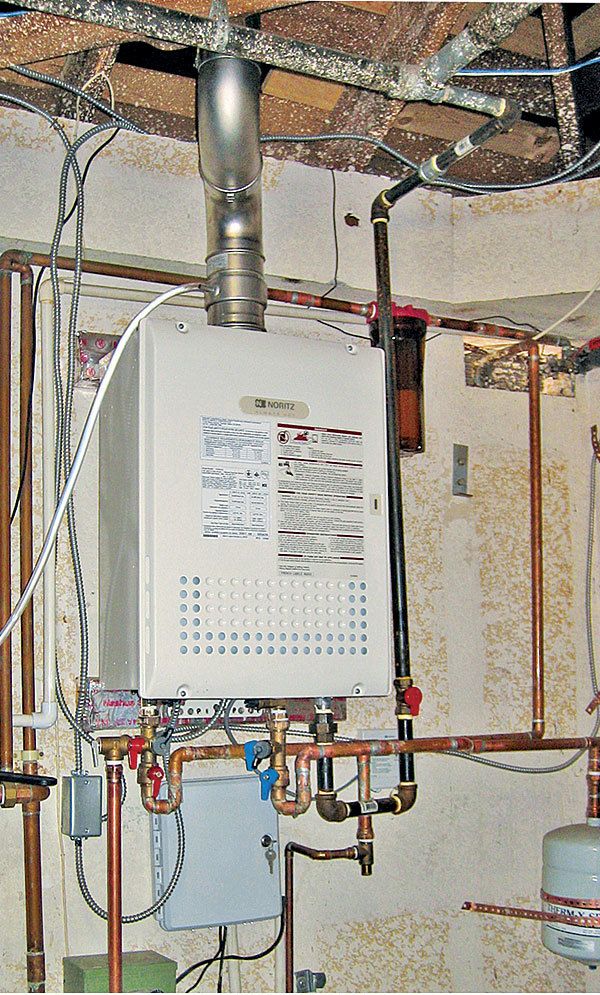
Q:
I recently purchased a tankless water heater for my house. The plumber wouldn’t install it after he realized that we do not run our hard municipal water through a softener. He said that without a softener, our heater would probably soon quit working as the water feed plugged with minerals. Does this mean that I need to add a water softener before installing the tankless water heater?
James Leto, Buffalo, NY
A:
Dave Yates, owner and operator of F.W. Behler, a mechanical-contracting firm in York, Pa., replies: Your plumber was right to point out the potential for scaling. The degree of scaling that occurs in potable hot-water systems is dependent on the type of hardness, the temperature rise, and changes in pressure. The hotter the delivery temps, the greater the amount of scaling. For example, tankless water heaters targeting 120°F are less susceptible to scaling than tankless water heaters set for 140°F, and so on.
Most of the precipitated minerals in tankless water heaters are flushed through the system because of the high velocity of the water zipping through the heat exchanger. However, tankless water heaters should be installed so that the heat exchanger can be chemically cleaned. Isolation valves and boiler drains easily solve this issue, and several manufacturers, as well as third-party vendors, have flush kits. Noritz and a few others have in-line filters they claim allow their tankless water heaters to be used in hard-water conditions.
Tankless water heaters have sensors that monitor the heat-exchanger operation, and scaling inside the heat exchanger’s tubing will act as an insulator, which will eventually lead to a fault code for over-temperature conditions. Once that occurs, a thorough chemical flush will need to be done before the unit can be placed back into service. Because of the personal and property safety issues involved, this work is best handled by licensed professionals trained in the procedure.
Hard water is typically made up of calcium, magnesium, bicarbonates, and sulfates. A lab can provide details of what’s in the water. Water hardness is expressed in grains; water measuring over 4 grains is typically considered the threshold for using a water softener.
Before running hard water through a tankless heater:
- Have the piping set up to facilitate chemical cleaning.
- Install a prefilter designed to mitigate the hardness.
- Have your installer check the inlet water pressure while operating the heater under full-flow conditions, and measure the delivery GPM flow rate (timed delivery into a bucket with gallon marks). This sets a benchmark for the new, clean heat exchanger, and provided that the inlet pressure is the same for subsequent tests, the full-flow outlet GPM test will reveal if any scaling has created a buildup within the heat exchanger.
Fine Homebuilding Recommended Products
Fine Homebuilding receives a commission for items purchased through links on this site, including Amazon Associates and other affiliate advertising programs.

Affordable IR Camera

Reliable Crimp Connectors

Handy Heat Gun


























